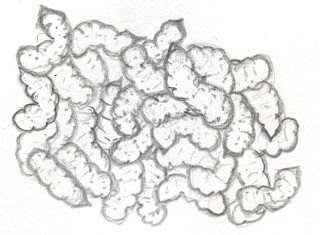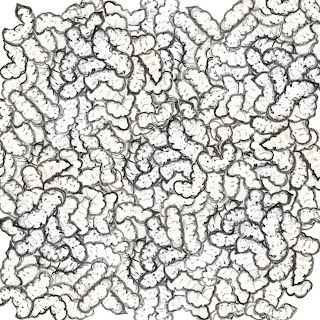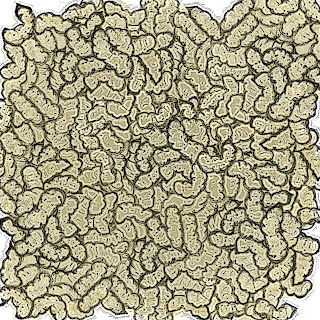Tim Noble and Sue Webster
Tim Noble and Sue Webster are artists based in London, where they work and live together. Their work is created by meticulously placing pieces of rubbish that has been picked up around London, so as when a light is projected at the sculpture an image is projected on the wall. Looking at the piles of rubbish there does not appear to resemble anything; however the shadows it creates are detailed and recognised images in silhouettes. Usually as a sculpture there is unlimited perspective in which this can be shown, however, the actual art is what is projected on the wall which makes the image a flat straight on veiw.. The rubbish that is used contains a lot of texture which makes the shadow more realistic and the colour contained within all the rubbish does not effect the overall shadow.
They also work with lights to create images that reference pop art. These light sculptures resemble carnival rides and often have flashing lights and words expressing love or hate.
Scrap metal, food packaging and the remains or dead creatures such as rats, are collected by Noble and Webster in their every day life. They pick up dead rats off the floor and put them in their freezer as they feel it would come in useful in one of their later sculpture. Once they have found a use for all of the rubbish, they begin creating the precise sculptures, making sure everything is in just the right place to create the silhouette.
This is a strong way of making use out of every day rubbish and turning it into something amazing. This work could be used in inspire the groups working with the scrap store. Sculptures could be made out of all the artistic materials donated by the companies, which could advertise the good use that can be made out of the scrap donated.
Source: http://www.youtube.com.com/watch?v=a-Ki-abe1RM
http://en.wikipedia.org/wiki/Tim_Noble_and_Sue_Webster

 I analyzed my draft poster, asking other peoples opinions on what I needed to change. It is important to get other peoples opinions on a piece of work as it gives a wider veiwpoint, and they are more likely to see what the audience will see.
I analyzed my draft poster, asking other peoples opinions on what I needed to change. It is important to get other peoples opinions on a piece of work as it gives a wider veiwpoint, and they are more likely to see what the audience will see. One of which was the taglines 'one mans trash...' was hard to read. It took a lot of experimenting using illistrator to try and find a font colour which would stand out over the picture.
One of which was the taglines 'one mans trash...' was hard to read. It took a lot of experimenting using illistrator to try and find a font colour which would stand out over the picture.









